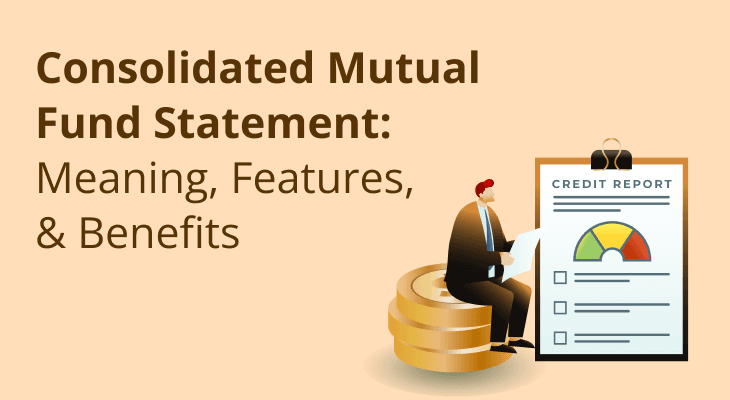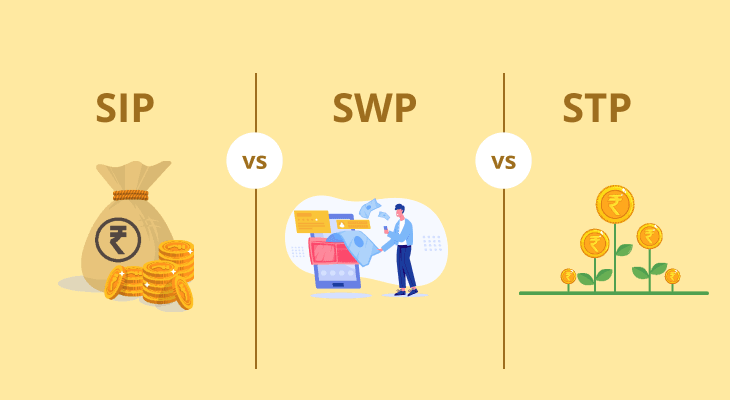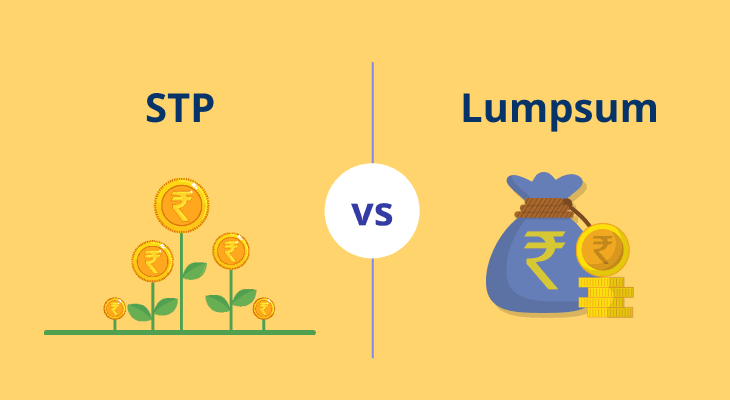
Consolidated Mutual Fund Statement: Meaning & Components
If you invest in different types of mutual funds across multiple Asset Management Companies (AMCs), keeping track of every transaction and holding can be quite cumbersome. This is where the Consolidated Mutual Fund Statement comes into play. Designed to simplify portfolio management, a consolidated account statement (CAS) brings together all your mutual fund investments under a single document, providing a detailed overview of your holdings, transactions, and valuations.
What Is a Consolidated Mutual Fund Statement?
The Consolidated Mutual Fund Statement is a periodic statement (usually monthly) provided to mutual fund investors that consolidates all their investments in one document. This document is generated based on your Permanent Account Number (PAN) and includes details of all transactions, holdings, and valuations across mutual funds managed by various AMCs. A CAS provides a unified view of all your mutual fund holdings, irrespective of the AMC or registrar. This document enhances transparency, simplifies tracking, and aids in better financial planning.
Key Features of a CAS:
Comprehensive Overview: It lists all your mutual fund investments and provides a snapshot of your portfolio.
Periodic Updates: CAS is issued monthly if there have been transactions in your folios, ensuring timely updates.
Regulatory Compliance: CAS complies with SEBI regulations, which mandate transparency and investor-friendly practices.
For instance, if you have SIPs with Mirae Asset and some other AMCs as well, your CAS will collate data from all into a single statement.
What Does a Consolidated Account Statement Include?
A mutual fund CAS is highly detailed and designed to cater to every aspect of mutual fund investments. Here are its major components:
1. Investor Information
The CAS begins with your personal details, including:
Full Name
PAN
Registered Email and Contact Information
This ensures accurate identification and correspondence.
2. Portfolio Summary
This section summarises all mutual fund investments with:
AMC names and folio numbers.
Types of funds (equity, debt, hybrid).
Number of units held.
Current NAV (Net Asset Value).
Total valuation of your portfolio.
3. Transaction History
It includes a detailed log of every mutual fund transaction you’ve made, such as:
Purchases (SIPs or lump sum).
Redemptions or switches.
Dividend payouts or reinvestments.
4. Tax and Expense Information
Details on exit loads, TDS, and expense ratios help you understand the cost implications of your investments.
By covering these aspects, CAS empowers you to evaluate your mutual fund performance holistically.
Why Should CAS Matter to Mutual Fund Investors?
Whether you’re a seasoned investor or just starting, a mutual fund consolidated account statement offers several benefits. Let’s explore them:
1. Simplifies Portfolio Management
The Consolidated Mutual Fund Statement (CAS) makes managing multiple mutual fund investments much easier by compiling all your holdings across various AMCs into one document. Investors no longer need to track individual statements from different AMCs, allowing for seamless portfolio tracking and monitoring. This is especially helpful for investors with a large number of folios or a mix of different fund types.
2. Enhances Transparency
With all transactions and holdings available in one place, investors can easily verify any investment activity, ensuring full transparency. CAS includes detailed information on each fund, including transactions, dividends, exit loads, and NAVs. This transparency helps in making better financial decisions and keeps investors informed about the performance of their investments.
3. Improves Financial Planning
A single, consolidated view of all investments gives investors the clarity they need to make informed decisions about their financial goals. By reviewing your CAS regularly, you can easily identify how your investments are performing and adjust your strategy. It also helps in monitoring the overall asset allocation in your portfolio, ensuring that your investments align with your risk tolerance and financial objectives.
4. Facilitates Tax Filing
CAS helps investors by clearly showing capital gains, TDS (tax deducted at source), and expense ratios. These details are extremely valuable when filing taxes, helping investors save time and reduce the possibility of errors. The consolidated statement serves as a ready-made tax reporting tool, simplifying the tax-filing process for mutual fund investors.
5. Helps Identify Dormant Folios
Sometimes, investors forget about older investments, especially if they’ve been made in multiple mutual funds over time. CAS highlights dormant or inactive accounts, ensuring that you don’t miss out on any potential growth or dividends from these investments.
6. Convenience and Accessibility
CAS is typically available in electronic format, either via email or online portals, making it easily accessible. Investors can check their portfolio status at any time, ensuring they’re always in the loop about the performance of their investments.
Benefits of Mutual Fund CAS for AMCs
It is not just you, the investor, but AMCs too benefit through the consolidated account statement process.
1. Enhanced Customer Experience
By providing a consolidated statement, AMCs improve the investor experience. It simplifies portfolio monitoring for clients, creating a smoother interaction with the AMC. This can build investor loyalty and make clients feel more confident in their investments.
2. Regulatory Compliance
CAS ensures that AMCs adhere to SEBI regulations regarding transparency and investor protection. With detailed reporting of transactions, dividends, and charges, AMCs are able to maintain compliance with the necessary regulatory guidelines, avoiding potential legal issues.
3. Reduction in Administrative Work
For AMCs, issuing one consolidated statement rather than multiple statements for different funds reduces the amount of paperwork and administrative work required. It streamlines operations and improves efficiency by simplifying communication and reducing errors in reporting.
4. Increased Investor Retention
When investors receive clear, transparent, and comprehensive reports, they are more likely to trust the AMC and continue investing. Providing CAS also helps investors make more informed decisions, which can lead to better investment outcomes and higher satisfaction, ultimately resulting in greater retention rates.
5. Cost Efficiency
By consolidating statements across AMCs and registrars, there are cost-saving benefits for both the AMC and the investor. The printing and mailing of individual statements can be expensive, but CAS reduces these costs by providing a more efficient solution.
6. Better Data Management
For AMCs, CAS facilitates better data management and ensures that all transactions are recorded accurately in a single, accessible statement. This improves internal reporting and tracking, reduces the chances of errors, and makes audits more manageable.
7. Investor Education
AMCs can use CAS as a tool to educate investors about the importance of diversification, tax implications, and portfolio performance. By providing clear insights into the overall investment portfolio, AMCs help investors make well-informed decisions.
How Do AMCs Create Mutual Fund CAS?
The process of creating a CAS mutual fund statement is streamlined and standardised to ensure accuracy and compliance. Here’s a step-by-step breakdown:
1. Data Compilation
Registrars like CAMS and KFintech collect transaction data from all AMCs where your PAN is linked.
2. PAN-Based Consolidation
Using your PAN as a unique identifier, data from different AMCs and folios are compiled into a single statement.
3. Periodic Issuance
A KFintech or CAMS consolidated statement is sent to your registered email ID, usually every month. An annual CAS is also sent, typically in April.
4. Error Checking and Validation
Registrars cross-verify all information to ensure that the data is complete and accurate.
Components of a Mutual Fund Statement
The CAS is divided into various sections, each serving a specific purpose to help you make informed decisions. Let’s look at these components in detail:
1. Investment Snapshot
A concise summary of your total holdings, current valuation, and NAVs.
2. Transaction Summary
A chronological list of all mutual fund transactions categorised by AMC and folio number.
3. Systematic Transactions
Detailed information about SIPs, SWPs (Systematic Withdrawal Plans), and STPs (Systematic Transfer Plans).
4. Portfolio Growth
Graphs and figures to illustrate the performance of your investments over time.
Conclusion
The Consolidated Mutual Fund Statement (CAS) is an invaluable tool for both investors and AMCs. For investors, it offers simplicity, transparency, and convenience, allowing for better management of investments, efficient tax reporting, and improved financial planning. For AMCs, CAS streamlines operations, enhances investor satisfaction, and ensures compliance with regulatory requirements.
By having all mutual fund investment details into one comprehensive document, a mutual fund CAS helps both investors and AMCs stay on track with their goals, ultimately contributing to better financial management and smoother operations.
SIPs let you invest small amounts regularly, making it easier to stay consistent with your goals. With time, your money grows faster through compounding, helping you get the most out of your investments. Try our SIP Calculator to see how your money can grow and make smarter plans for your future
FAQ
What is a Consolidated Mutual Fund Statement (CAS)?
A Consolidated Mutual Fund Statement (CAS) is a document that combines all mutual fund transactions and holdings across various Asset Management Companies (AMCs) into one report. It provides an overview of all your investments in mutual funds, simplifying portfolio tracking
What does a Consolidated Account Statement include?
A CAS includes details such as investment transactions, units held, NAV (Net Asset Value), dividends, capital gains, and taxes. It aggregates information from all your mutual fund investments across different AMCs into one statement.
Why is CAS an important document for MF investors?
CAS is crucial as it provides a clear, single document that brings together all mutual fund investments. It helps investors monitor their portfolio, track dividends, simplify tax filing, and better understand their overall asset allocation and investment performance.
How do AMCs calculate and create Mutual Fund CAS?
AMCs compute CAS by aggregating data from each of the mutual fund investments held by the investor, including transactions, units bought and sold, dividends received, capital gains, and charges. They update the statement periodically, typically quarterly.
What components are included in a Mutual Fund Statement?
A mutual fund statement typically includes investor details (name, address), fund details (name, type), investment summary, transaction history, capital gains, dividends received, exit loads, and any applicable taxes. It may also contain a breakdown of returns and NAV over time.
Can I access my Mutual Fund CAS online?
Yes, most AMCs and registrars offer online access to your CAS. You can log in to the online portal or app of your respective AMC or use services like CAMS (Computer Age Management Services) to download your statement electronically.
How often is the CAS updated?
CAS is usually updated quarterly and is typically sent to the investor’s registered email address. However, if there is any significant activity, such as a dividend payout or redemption, the statement may be updated more frequently.
What is the difference between CAS and an individual mutual fund statement?
CAS consolidates all investments from different AMCs into one report, while individual mutual fund statements only reflect the transactions and holdings of a specific fund. CAS provides a comprehensive overview, whereas individual statements focus on a single fund.
Can I use CAS for tax purposes?
Yes, CAS is a useful tool for tax reporting. It shows capital gains, dividends, and tax deducted at source (TDS), making it easier for investors to file their taxes. It can help determine the tax on long-term and short-term capital gains.
Is there any charge for receiving the CAS?
No, CAS is typically provided free of charge by AMCs and registrars. It is sent to investors as a service to help them manage their mutual fund investments more effectively.


